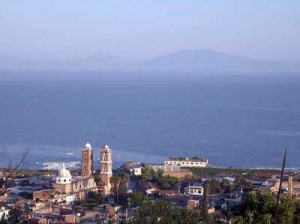 Chapala is the largest of the six Lakeside communities. The region where Lake Chapala is located was called Chimaloacán: “place for the people using shield”. In the ninth century a big migration of Nahuatl origin tribes, from the northwest of the country, gave rise to the major settlements of the central plateau of Mexico; the residents of Chapala belonged to the group of Tanalan from where a warlord named Chapa encouraged groups to form a new population on the shores of the lake. Thus was formed Chapatla or Chapatlán. The word Chapala comes from the Nahuatl and means “place of Grasshoppers on the water”. Due to the characteristics of the area, the main activities were fishing, hunting, trade and agriculture. Over the entire basin was established the first pre-Hispanic communications between Tenochtitlan and northern and western regions. Later this long basin favored the Spanish exploration and conquest. more…
Chapala is the largest of the six Lakeside communities. The region where Lake Chapala is located was called Chimaloacán: “place for the people using shield”. In the ninth century a big migration of Nahuatl origin tribes, from the northwest of the country, gave rise to the major settlements of the central plateau of Mexico; the residents of Chapala belonged to the group of Tanalan from where a warlord named Chapa encouraged groups to form a new population on the shores of the lake. Thus was formed Chapatla or Chapatlán. The word Chapala comes from the Nahuatl and means “place of Grasshoppers on the water”. Due to the characteristics of the area, the main activities were fishing, hunting, trade and agriculture. Over the entire basin was established the first pre-Hispanic communications between Tenochtitlan and northern and western regions. Later this long basin favored the Spanish exploration and conquest. more…
Tag-Archive for "Nahuatl"
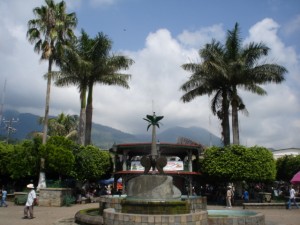 Xilitla is a little coffee producer town nestled in the Sierra Madre Oriental in the higher parts of the Huasteca Potosino, due to its location coffee beans are harvested as well as many kind of citrus. This place is surrounded by the most impressive waterfalls, high mountains and extensive vegetation which make this area a true paradise to admire the great variety of flora and fauna in the region. The name “Xilitla” has Nahuatl roots, it has been said that it means “Snail place”. Upon arrival of the Augustinian missionaries in the sixteenth century, was renamed as “St. Augustine of the great Xilitla”, so from then on is known only as Xilitla. more…
Xilitla is a little coffee producer town nestled in the Sierra Madre Oriental in the higher parts of the Huasteca Potosino, due to its location coffee beans are harvested as well as many kind of citrus. This place is surrounded by the most impressive waterfalls, high mountains and extensive vegetation which make this area a true paradise to admire the great variety of flora and fauna in the region. The name “Xilitla” has Nahuatl roots, it has been said that it means “Snail place”. Upon arrival of the Augustinian missionaries in the sixteenth century, was renamed as “St. Augustine of the great Xilitla”, so from then on is known only as Xilitla. more…
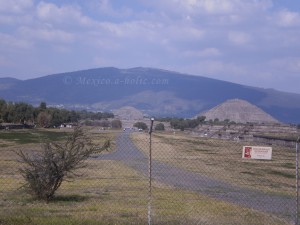 Teotihuacan, which in Nahuatl means City of the Gods or The place where gods are made is an ancient ceremonial center, one of the most important pre-Hispanic America due to its masterful urban layout, its monumental architecture and strong political and religious influence to other cities; it is also one of the most visited archaeological sites and values of Mexico, It is located in the municipality of San Juan Teotihuacan in the east of Mexico City. Teotihuacan was inscribed on the List of World Heritage by UNESCO in 1987. Through time, Teotihuacan has established itself as a sample of the best architectural style in Mesoamerica as well as a mystical center where, according to the pre-Hispanic followers of spiritual traditions, each 21st March there are powerful cosmic forces that are distributed to the four cardinal points, ideal time to renew the energy of the human body. more…
Teotihuacan, which in Nahuatl means City of the Gods or The place where gods are made is an ancient ceremonial center, one of the most important pre-Hispanic America due to its masterful urban layout, its monumental architecture and strong political and religious influence to other cities; it is also one of the most visited archaeological sites and values of Mexico, It is located in the municipality of San Juan Teotihuacan in the east of Mexico City. Teotihuacan was inscribed on the List of World Heritage by UNESCO in 1987. Through time, Teotihuacan has established itself as a sample of the best architectural style in Mesoamerica as well as a mystical center where, according to the pre-Hispanic followers of spiritual traditions, each 21st March there are powerful cosmic forces that are distributed to the four cardinal points, ideal time to renew the energy of the human body. more…
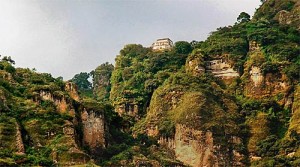 The word ‘Tepoztlán comes from the Nahuatl and means “place of the copper ax”; it is a magical place that reflects what the Mexican traditions are, and despite modernity has managed to preserve and assess the historical and cultural heritage over time.
The word ‘Tepoztlán comes from the Nahuatl and means “place of the copper ax”; it is a magical place that reflects what the Mexican traditions are, and despite modernity has managed to preserve and assess the historical and cultural heritage over time.
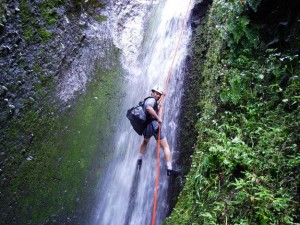 Tepoztlán is located in the northern part of Morelos state and has a variety of natural areas that form the Tepozteco National Park with 24 acres. There people can perform a variety of adventure activities such as climbing and camping and at the same time enjoy the many types of flora and fauna in the place.
Tepoztlán is located in the northern part of Morelos state and has a variety of natural areas that form the Tepozteco National Park with 24 acres. There people can perform a variety of adventure activities such as climbing and camping and at the same time enjoy the many types of flora and fauna in the place.
